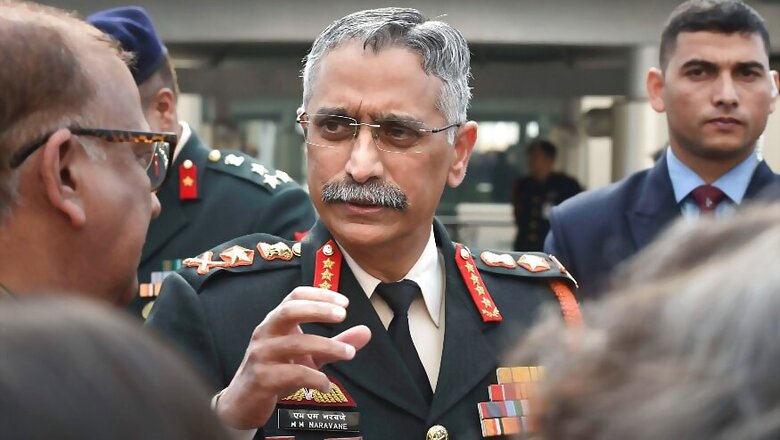
views
Army chief General MM Naravane has for the first time gone on record on the India-China standoff at the Line of Actual Control to say that the “situation is under control”.
Speaking to journalists after the passing out parade at IMA in Dehradun, he explained that after multiple levels of talks between Chinese and Indian commanders, there has been a disengagement, but not retreat.
"I would not use the word retreat. There is no retreat. The correct word is disengagement. Both sides are disengaging in a phased manner. We have started from the north, the area of the Galwan river. A lot of disengagement has happened. We have had a fruitful dialogue with the Chinese. It will continue and the situation will improve."
Lt Gen DS Hooda, former commander of the Northern Command, says the army chief’s choice of words is deliberate.
"The issue has to be decided mutually. Using a word like retreat denotes victory or defeat. The talks are at a sensitive stage and the semantics need to be right. The language needs to be tempered."
Indian and Chinese troops have been eyeball-to-eyeball at four locations in eastern Ladakh, including Galwan Valley, Hot Springs, Gogra and Pangong Tso. Sources say that while the Chinese are willing to engage with India on the first 3 conflict areas, they are not budging as far as Pangong Tso is concerned. This is where sources say and satellite images confirm that the PLA has come, and upto finger 4.
Lt Gen Hooda says, “This is an area where both sides have differing perceptions. For Indian troops, that means they have come into our area. According to us, the LAC runs through finger 8. All these years, there were claims and patrol skirmishes but the Chinese did not build anything there. But now things have changed."
When asked a specific question by reporters on Pangong Tso, the army chief side-stepped it.
It was on the banks of Pangong Tso that Chinese and Indian troops came to blows on the intervening night of May 5 and 6. That bloody brawl escalated into a standoff at not just Pangong Tso, but three other areas in eastern Ladakh. Since then both India and China have moved troops, tanks and artillery guns along the entire length of the 4,000 km-long LAC.
Both India and China have said that the border tensions will be resolved peacefully through talks. On June 6, military commanders of both sides held a marathon six-hour meeting at Chushul-Moldo. More are in the offing in the coming days.
India wants China to step back to status quo ante as it existed in April. The process will take time, says Lt Gen Hooda.
"It is not an issue to do with time. It depends on what the demands are of both sides and if they can be reconciled. If it can't, talks will drag on,” he said.




















Comments
0 comment